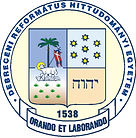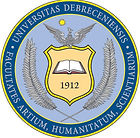
Dr. Gaál Botond honlapja
Alone in the World? Human Uniquness in Science and Theology. - By J. WENTZEL VAN HUYSSTEEN.
The Gifford Lectures, 2004. William B. Eerdmans Publishing Company,
Grand Rapids, Michigan, USA.,
2006. Pp. XVIII+347. …. $
This year is the 120th anniversary of Lord Gifford’s death. Exactly 70 years ago Karl Barth held his Gifford-lectures in Aberdeen. He confessed apologetically that he could not fulfill Adam Gifford’s last will according to which natural theology should be propagated. Wentzel van Huyssteen was in a similar situation in 2004, because he also had to clarify how he interpreted Lord Gifford’s original intention. Lord Gifford thought that the true knowledge of God arose in the same manner as scientific cognition. According to Wentzel van Huyssteen though, in our age we can fulfill this good intention if we discuss the relationship of science and theology. This approach serves as a clear introduction to Wentzel van Huyssteen’s lecture series.
It is worth to start the introduction of Wentzel van Huyssteen’s book titled Alone in the World with recommending it both to natural scientists and theologians. If Lord Gifford were alive today, he would probably do the same, so we pay homage to his memory. The Princeton Professor van Huyssteen held his lectures at the University of Edinburgh, in the capital of Scotland, when science knew a great deal about the human being. The anthropology of today also asks the question from itself: where, when, how and why did humans come into existence? Natural science is able to provide solemn answers to the first three questions. In this high level of scientific milieu something valid and authentic has to be said about the human being from the point of view of Christian theology. Since theology also asks: who or what is mankind? Could, however, theology say something that facilitates the progress of scientific anthropological knowledge? Professor Wentzel van Huyssteen’s book gives an affirmative answer to this question. In the mean while it also asks in an implicit way whether the modern anthropological knowledge can help theology in the interpretation of the human being. It turns out that we get a positive answer to this question as well. Therefore we recommend the book to all.
In six chapters the book deals with the question how we should understand the uniqueness of the human being. This unique character of mankind constitutes a formidable challenge for both natural science and theology. From here the chapters take us closer to the secret of humans step by step. The topic becomes more and more interesting and exciting, while the interdisciplinary dialogue also shows that both fields may benefit from mutually helping each other in their own advancement.
The title of the first chapter is Human Uniqueness as an Interdisciplinary Problem? It is a very important starting chapter; it opens the way for the following five chapters. Van Huyssteen grasps Lord Gifford’s original intention with what we translate today as interdisciplinarity. We should approve of this. Thus human uniqueness appears as a topic of interdisciplinary dialogue both in the scientific approach and in the Christian thinking. This is ensured by the concept of transversality as a heuristic device. The second chapter, Human Uniqueness and Cognitive Evolution examines the problem of human uniqueness from the perspective of evolutionary epistemology. Darwin’s theory of evolution is much more valued today by the world of science than ever before. Thus the theory of evolution also draws attention to the fact that with evolution not only humanity’s self-comprehension has also developed, but that this development in itself has become a link between biology and culture. As evolution assigns a principal role to mankind, similarly mankind’s metaphysical and religious inclination has a significant role. In that case, however, in the third chapter entitled Human Uniqueness and the Image of God, we sense the proposition that Christianity also sharply emphasizes the prominent position of the human being in the world with the teaching of “Imago Dei” to be justified. This is a very old biblical teaching. At this point we feel a convergence with the explanation of Homo Sapiens in biology. Both support the notion of human uniqueness. This prompts theology to rethink its extensive and elaborate teachings about “Imago Dei”, accumulated during the long history of Christian philosophy. In many cases these lack addressing the relationship of the human being with the created world. The fourth chapter, Human Uniqueness and Human Origins, which points at the features of the prehistoric human mind, further enhances our interest. The author presents the evolution of human consciousness or self-awareness from a paleoanthropological point of view. If comprehension of humanity is inherent in the origin of mankind, then human uniqueness manifests itself in prehistoric man’s self-awareness. Based on the cave findings in Basqueland and France, this self-awareness seems fluid, meaning that it must have carried within the option of transformation. This is the conclusion, which could be drawn based on the artistic imagery. We could state that the human mind has been creative since its earliest stages. It is no wonder that relatively early religion, art and science appear with their respective symbolic paraphernalia. The reader is presented all this on beautiful, colorful cave drawings. But curiosity and the fifth chapter takes us further, Human Uniqueness and Symbolization leads us anew to an exciting topic: the cognitive activity of the human being comes into existence with the help of the language. Language is the most expressive peculiarity of the human existence. It is in connection with the scientific, artistic, religious activities, with its symbolic expressions, as well as the human being’s intelligence and emotional world. This linguistic topic takes us further toward neuroscience and neuropsychology, which in turn provide us with even more knowledge towards the justification of human uniqueness. In the last, the sixth chapter titled as Human Uniqueness in Science and Theology we reach the peak. Here we get to know the identity of the human being, named by Christian theology as “Imago Dei” and by science as Homo Sapiens. The first chapter only asks whether human uniqueness is an interdisciplinary problem. Now, when we see the human being in his complexity we can ascertain that human uniqueness is really an interdisciplinary problem of different sciences. Although the human being still remains to be a secret! Moreover, as far as humankind is concerned, there are heaps of secrets before us. For this reason Wentzel van Huyssteen’s new book, titled Alone in the World?, is an excellent book.
BOTOND GAÁL(Debrecen Reformed Theological University, Hungary)

